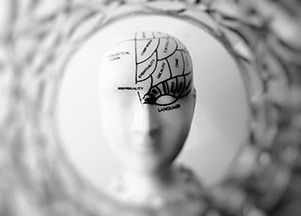|
WHAT EXACTLY IS TECHNOLOGY ANYWAY? Examples of technology throughout the history of education include wooden paddles with printed lessons during the Colonial years; the Magic Lantern, an archaic form of a slide projector; and the chalkboard (which arrived around 1890), followed by the pencil (in 1900). Audio in the form of radio started in the 1920s; the overhead projector was introduced in 1930, the ballpoint pen in 1940, and headphones in 1950. Videotapes were first used during the early 1950s, and Skinner’s all-inclusive teaching machine came thereafter. Skinner's teaching machine had Popular Mechanics asking if "robots will teach your children" ... in 1961. The late 1950s and early 1970s produced the photocopier and handheld calculator, and Sokolski’s Scantron system began scoring assessments in 1972. Everyday use computers arrived in the 1980s, the Internet was born in the early 1990s, and Apple released the first personal digital assistants (PDAs) in 1993. In a word, technology has incrementally crept into classrooms over the years as a means to have a positive impact on student achievement and relieve teachers of repetitious work (Cuban, 1986; Martin, 2016; Purdue University, n.d.).  TECHNOLOGY AND THE WORKPLACE Technology has changed the thinking of teachers as they must now consider how technology impacts transdisciplinary outcomes such as the 21st-century skill, collaboration. Due to technology, the context of collaborating has dramatically changed as technology allows collaboration to take place anywhere, anytime. Ubiquitous collaboration allows for the sharing of projects and increases productivity on a global scale and employers are actively seeking candidates with this workplace competency (Manpower Group, 2015).  How should students engage with educational technologies and for what purposes? (McLeod & Graber, 2019) How should students engage with educational technologies and for what purposes? (McLeod & Graber, 2019) THE BOTTOM LINE As technology is ever changing, so will the knowledge and skills needed to be a successful collaborator, critical thinker, creator, and communicator (McGivney & Winthrop, 2016). In summary, technology is not an ends to a means nor should it be viewed as a standalone. The appropriate use of technology can be an avenue to 21st-century learning and be used to enhance learning and increase student achievement (McTighe & Curtis, 2016). As technology continues to transform the workplace we need to ensure students are complemented by technology instead of being replaced by it (Brynjolfsson & McAfee, 2014). Teachers must instill the digital literacy knowledge, skills, and outcomes needed to leverage the available technologies for student and future employee success (Martin, 2016). Be sure to join the Pedagogize It community if you enjoyed this quick lesson in ed tech history. We will be looking at strategies for how to best use technology for learning in future posts and you will not want to miss out. Below are the resources mentioned from this post if you want to learn more about the history of ed tech and ideas for successful integration. In the meantime, leave your thoughts in the comments about how technology has or has not changed teaching and learning in your opinion throughout the history of education.
0 Comments
 How do you and your team "focus?" How do you and your team "focus?" A Google search for focus revealed “about” 4,570,000,000 results. With so many results it is no wonder why so many individuals and organizations are seeking ways to improve their focus on something. Perhaps it is productivity, concentration, attendance, grades...the list seems endless. When leading a classroom, building, or district, focus has to be top of mind, literally. But what exactly is focus? On any given day our team works cross functionally with nine buildings, hundreds of personnel, and support thousands of devices across the network. Focus is crucial to our success. Our team recently completed reading Boundaries for Leaders (Cloud, 2013), and found that the big secret to increasing individual and team focus consists of three components:
 How do you keep your focus? How do you keep your focus? WHAT WE LEARNED We learned that we have to pay attention to what matters most by focusing on the relevant (attending), block distractions by not letting them in (inhibiting), and increase our individual and collective memory by having systems in place to help us to "remember and build on relevant information" (working memory). And that is when it hit me. While we learned the importance of having a system in place to help us focus, we had a little work to do with our newly found knowledge. Here is how we use the executive functions of the brain to help our individual and collective focus. The executive functions of the brain (attending, inhibiting, working memory) are now common language and practice in our system, and here are a few examples.  Make your meetings matter with the recommendations from Lencioni. Make your meetings matter with the recommendations from Lencioni. We attend by:
We inhibit by:
And finally, we increase our working memory by:
NUGGETS OF KNOWLEDGE
The resources included in Cloud’s writing, most notably the meeting processes of Lencioni, have completely reshaped how we approach meetings and work with one another. Focusing by using the executive functions keeps us on task while avoiding getting lost in what McChesney, Covey, & Huling (2012) refer to as the whirlwind. The knowledge and examples in Boundaries for Leaders fundamentally changed the way we do business. Is that not something you would like for your department or building? The goal is to attend to what matters, block out as many distractions as possible, and find a way to keep what matters most in front of you and your team as often as possible. Remember, "you get what you create or allow and you are ridiculously in charge!" (Cloud, 2013). I found these resources for improving our focus to be of great use and hope you do as well. Let me know how, or what processes you use to increase your individual and team’s focus in the comments below.
 What ROI questions are you asking when using technology for learning? What ROI questions are you asking when using technology for learning? Sheninger, 2016, posted an interesting thought on his blog regarding technology and return on instruction. He said it like this: “When integrating technology there needs to be a Return on Instruction (ROI) that results in evidence of improved student learning outcomes.” I can almost hear you thinking... "how exactly am I supposed to do that?" I am glad you asked. One way I am doing this is through the active monitoring of how technology is being used to help in improving student learning outcomes. Specifically, teacher and student use of communication, creativity, critical thinking, and collaboration skills, in addition to other formative and summative measures. I have two ROI questions that I like to pose to teachers and administrators when teachers are getting digi with their pedi(agogy):
An investment in knowledge pays the best interest. In my role I analyze large amounts of instructional and infrastructural data from teachers and students throughout seven grade-level buildings. I enjoy being able to build a context of learning for each building through the lens of digital learning. Ultimately, I try to identify if teachers and students are getting a return on instruction. In a recent analysis I unpacked four conclusions, implications, and recommendations for increasing the digital ROI in an elementary building. This included goal setting, lead and lag measures, effective antecedents, and aligned tools for learning based upon unique survey responses and prior trends.  Ask yourself "technology for the purpose of what?" before using it. Ask yourself "technology for the purpose of what?" before using it. Benjamin Franklin said, “an investment in knowledge pays the best interest.” Here is the bottom line. When it comes to calculating your ROI, know your investors (students), your investment timeline (curricular aim), and how big of a return you seek (assessment). This investment formula will be sure to increase your return on instruction and pay the best dividends in learning. How are you calculating your ROI in the classroom? Here are a couple of helpful resources for getting your best digital return on instruction:
 What is your next move? Planning using the PIM process is sure to help you figure it out. What is your next move? Planning using the PIM process is sure to help you figure it out. On a cold morning in January 2017 a team of nearly 30 teachers and administrators assembled to complete a comprehensive needs assessment regarding professional learning and digital practices throughout the district. Fresh on my doctoral coursework mind at the time was using the PIM process to identify what was working well and not so well in our district’s digital practices. This continuous improvement cycle made up of three components, planning, implementation, and monitoring guided our learning journey. In the book Activate, planning is “characterized by a comprehensive needs assessment, a process of inquiry that generates hypotheses for action, and delineation of SMART goals” (p. 137). The authors later explain that inquiry becomes advanced when the needs assessment data are triangulated with practices (antecedents) that promote achievement. I like to think of this process as a treasure hunt! Since our purpose was professional and digital learning, we used the Office of Educational Technology’s Future Ready Schools Learning Toolkit as a planning resource for the PIM method. Let me walk you through the process. TEST YOUR PLAN This inquiry process engaged educators in classroom observations, the analyzing of multiple data sets including review of district and building strategic plans, professional learning practices, policies and procedures, assessment data and more. So what do you do after trudging through loads of data? You test it. After a thorough review of the results and triangulation of data, the following hypotheses (examples) were generated:
 The use of the If/Then statements assist in answering what do you want to know, and ultimately help frame the SMART goals. The use of the If/Then statements assist in answering what do you want to know, and ultimately help frame the SMART goals. As if that is not enough, the hypotheses helped frame the following SMART goals:
PLAN YOUR WORK AND WORK YOUR PLAN -Napoleon Hill These were our results using the PIM process for planning. With a little front-loading of time and energy you too can be constructing your plan for greatness using this process. In future posts I will demonstrate the remaining two stages of this continuous improvement model, implementation and monitoring. Until then, here are suggested resources to help guide your planning, implementing, and monitoring (PIM) journey for continuous improvement.
#edleadership, #digped, #edtechchat, #leadlap, #leadupchat |
 RSS Feed
RSS Feed